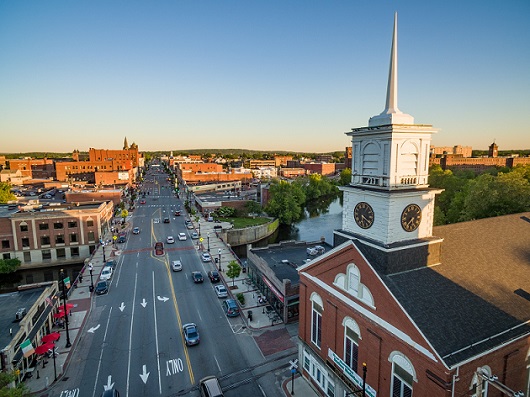In the last decade, New Hampshire’s population grew at the slowest rate in a century, signaling that generations’ worth of astounding economic and cultural gains could be put at risk.
New Hampshire’s population grew by 4.5% from 2010-2020, the lowest growth rate since the state had 2.9% growth from 1910-1920. It marked the first time since 1920 that the state’s population growth rate has fallen below 5%. The decline follows a 43% drop the previous decade and represents the fourth straight drop in population growth recorded by the Census.
We want to thank Drew Cline for this Op-Ed. If you have an Op-Ed or LTE
you would like us to consider, please submit it to Editor@GraniteGrok.com.
New Hampshire enjoyed double-digit population growth in each decade of the second half of the 20th century. But the rate began falling in the 1980s and has been in sharp decline since the 1990s.
- 2010-2020: 4.6%
- 2000-2010: 6.5%
- 1990-2000: 11.4%
- 1980-1990: 20.5%
- 1970-1980: 24.8%
- 1960-1970: 21.5%
- 1950-1960: 13.8%
Vermont’s population grew by just 2.8% in the last decade, down from 8.2% in the 1990s. New Hampshire is at risk of following Vermont’s path toward population stagnation. Both states already rely on immigration, rather than births, for population increase.
For decades, New Hampshire has prided itself on its pro-growth economic policies. Keeping taxes low and government small helped make our state the economic marvel of New England. Even without a large port or a cluster of elite research universities, we grew rapidly while states with better natural resources struggled.
But New Hampshire’s focus on tax rates has left the economy vulnerable in other areas. As the state was chasing growth, local governments were trying to limit it. Local governments have succeeded in choking off the state’s once robust population growth. That threatens the state’s economic future because the real secret to a vibrant economy is innovation, and innovation comes primarily through people sharing ideas.
To simplify, it’s not the size of the population itself that matters as much as the size of the market. New Hampshire’s slower population growth is a problem because it is constraining the growth of the state’s economic marketplace.
You just have to look at the help wanted signs posted everywhere to see the severity of the problem. “Larger markets induce more research and faster growth,” as economist Paul Romer put it.
New Hampshire has done a tremendous job stimulating increased market activity by focusing on pro-growth economic policies. But low taxes cannot be the sum of our pro-growth agenda. When creating the conditions for a vibrant marketplace, low taxes are just one factor.
A vibrant market needs policies that allow innovation and investment, but it also needs people to do the innovating and investing. Local regulations that severely restrict the construction of new housing are not the only factor contributing to the state’s lower population growth, but they have played a significant role.
Using U.S. Census data, we calculated the growth in housing units in New Hampshire in each decade going back to 1940. You can see the huge drop starting in the 1990s.
- 2010-2020: 3.9%
- 2000-2010: 12.4%
- 1990-2000: 8.6%
- 1980-1990: 30.4%
- 1970-1980: 37.5%
- 1960-1970: 25.2%
- 1950-1960: 17.7%
- 1940-1950: 20.5%
Until the 1990s, the growth in the number of housing units was larger than the state’s population growth. In two of the last three decades, the population growth has been larger than the growth in home construction.
That has produced a huge shortage of housing. The housing shortage is not only driving up home prices and rents. It’s constraining population growth. This housing shortage is reducing the supply of available workers, which is hurting the very businesses that legislators have worked so hard to help. (See all the help wanted signs.)
It’s also constraining the growth of the state’s economic market. It doesn’t do much good to help a business create a new job if, with the other hand, you make sure there’s no one around to fill the job.
In the long run, the local regulations that have created a de facto cap on population growth will work against the tax cuts and regulatory reforms that brought us the tremendous growth of the last 70 years. Policymakers need to understand that creating a vibrant, innovative marketplace requires more than just keeping taxes and spending low. Artificially limiting the number of market participants shrinks the market and hurts the whole state.
Andrew Cline is the President of the Josiah Bartlett Center for Public Policy – Republished with Permission.
